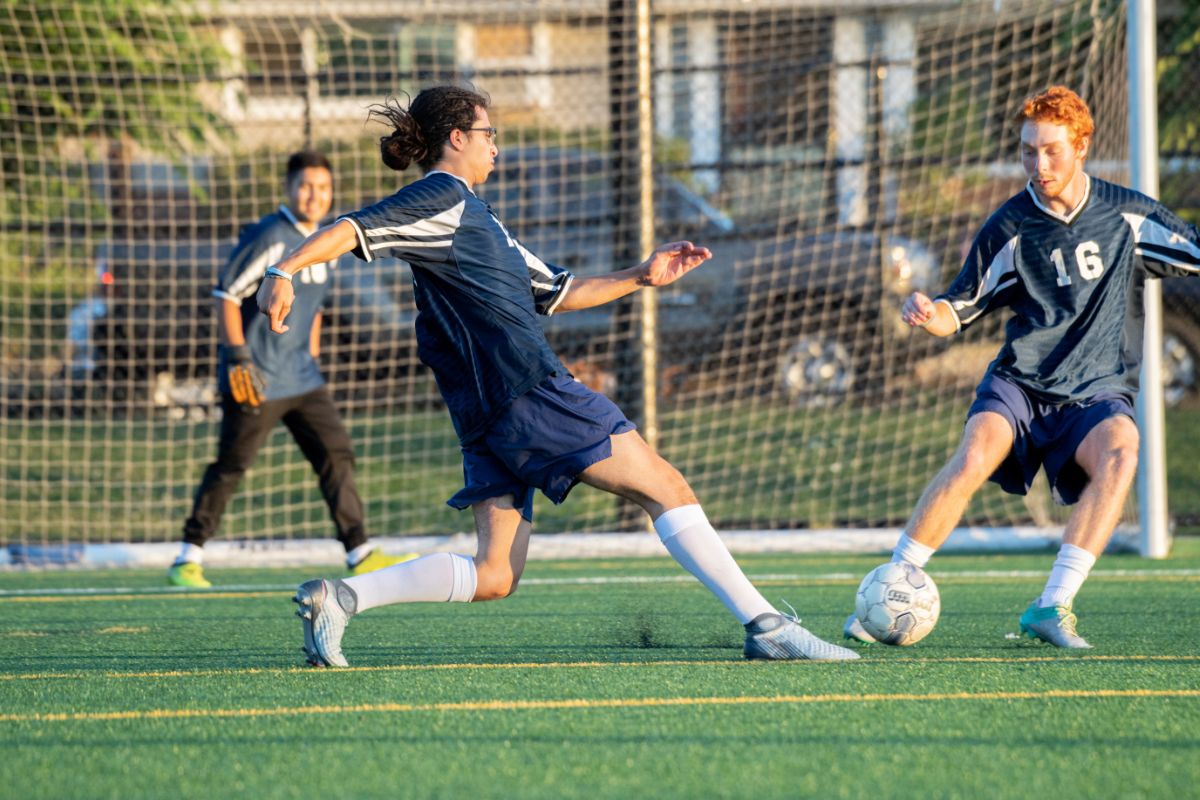Official Length of a Soccer Game
Have you ever been casually watching a soccer match, not really paying attention to the clock, and wondered how long the game actually lasts?
Depending on how good the game is, it can either feel like it’s going on for hours or like it’s over in 5 minutes! However, according to the official clock, there is a set amount of time that every soccer game takes to complete.

The standard total time for a professional soccer game is 90 minutes, split into two halves of 45 minutes.
While this seems pretty straightforward on the surface, soccer games almost never last exactly 90 minutes. There are plenty of other timekeeping regulations and rules that go into it.
In this article, we’ll go over everything you need to know about timekeeping in soccer and find out exactly how long the average game lasts.
Timekeeping In Professional Soccer
As we mentioned earlier, the regulation amount of time for a professional soccer match (or any competitive match at the senior level) is 90 minutes. The teams play for 45 minutes, defending one goal. Then, after a half-time break, the teams switch ends and play the remaining 45 minutes defending the opposite goal.
It is the job of the referee to keep track of how much time has been played and to decide the end of each half. For this reason, an essential part of a referee’s equipment is a digital watch. Interestingly, you’ll see some soccer refs wearing two watches during a game.
One watch acts as a stopwatch to keep track of how much time has been played in each half. The second one also displays a stopwatch but acts as a failsafe if the first one stops working for some reason. This way, if one of the referee’s watches stops working or runs out of battery, they’ll still be able to keep track of how much time has been played.
However, despite the regulation total game time of 90 minutes, a game of soccer will almost always last a few minutes longer. This is because of something called stoppage time…
Stoppage Time
If you’ve watched professional soccer games, you will have seen stoppage time in action. This is the time that the referee adds to the end of each half because of the time spent treating player injuries, waiting for balls to be retrieved or any other kinds of stoppages. Some people refer to this period as ‘added time’ because it simply refers to time added due to stoppages.
This added time most often only equates to 2-4 minutes at the end of each half. If there’s a particularly serious injury to a player that requires lengthy treatment on the field, stoppage time can go to over 10 or 15 minutes. However, it is very rare to have this much time added.
Does The Fourth Official Decide Added Time In Soccer Matches?
At the professional level, soccer matches will have four officials: the head referee, two assistant referees, and a fourth official. One of the duties of the fourth official is to indicate how much time is added to the end of each half.
However, the fourth official is not the person who decides how much stoppage time there is for each half. They simply relay the message given by the head referee.
The fourth official will then display the number of added minutes on an electronic board so that the players, spectators, and broadcast crew can see clearly.
How Does The Ref Know How Much Time To Add To The Half In Soccer?
Added time is very rarely calculated precisely, to the exact second. The head referee will instead keep an estimation of how many minutes need to be added to each half, based on how long each stoppage in play was and how many stoppages there were. Although, referees will also often stop their watch when the ball goes out of play to keep a much more accurate account of how much time needs to be added on.
This requires communication between the head referee and the fourth official so that they don’t lose track of when the 45 minutes is up and when stoppage time needs to be added.
Extra Time
The other form of time added to the end of a soccer match is extra time or over time. This is different from added time because it only applies in cup formats or where a tied result is not an option. For example, in the knockout stages of the FIFA World Cup, teams can’t have a tie. So extra time is needed to decide the game.
The extra time period is 30 minutes, split into two halves of 15 minutes each.
In this extra time period, teams have their last chance to score and break the tie, though the full 30 minutes must be played, regardless of whether one team scores or not. Historically there was a “Golden Goal” rule where the first team to score in extra time was the winner. This is no longer the case.
Just like in the regulation 90-minute period, there is added time applied to the end of each half of extra time, if there have been any significant stoppages.
Then, if the score is still level at the end of the extra time period, the game is decided by a penalty shoot-out.
Youth Soccer
Of course, the times that we’ve outlined in this guide only apply to adult soccer matches. At youth levels, match durations will vary depending on the league, level of competition, and the age of the players.
For example, here are the official recommended match lengths for each age group, according to US Youth Soccer.
Recommended Youth Soccer Game Length
- U6 – 4 quarters of 6 minutes
- U8 – 4 quarters of 12 minutes
- U10 – 2 halves of 25 minutes
- U12 – 2 halves of 30 minutes
- U14 – 2 halves of 35 minutes
- U16 – 2 halves of 40 minutes
- U17 – 2 halves of 45 minutes
Final Thoughts
The officially recognized duration of a soccer match is 90 minutes. However, you’ll very rarely see a professional-level match last exactly this long. Injuries, free-kicks, throw-ins, and all other stoppages cause the games to last at least a few minutes more than the regulation 90.
Next time you’re watching a soccer match, keep a note of the time and see how long the game actually lasts!


